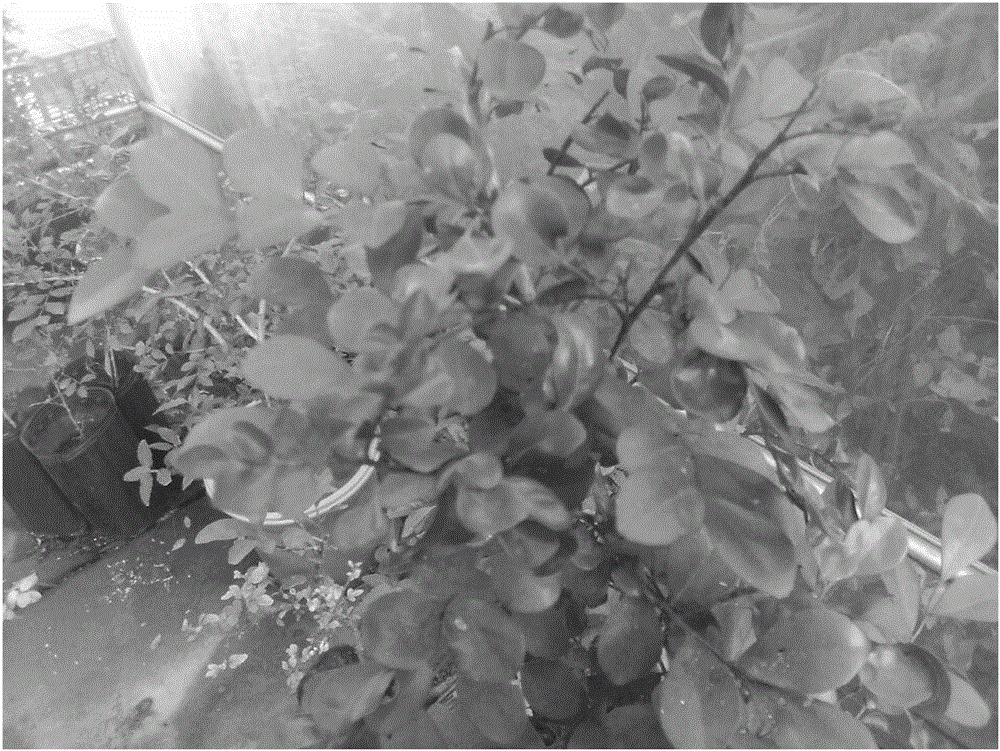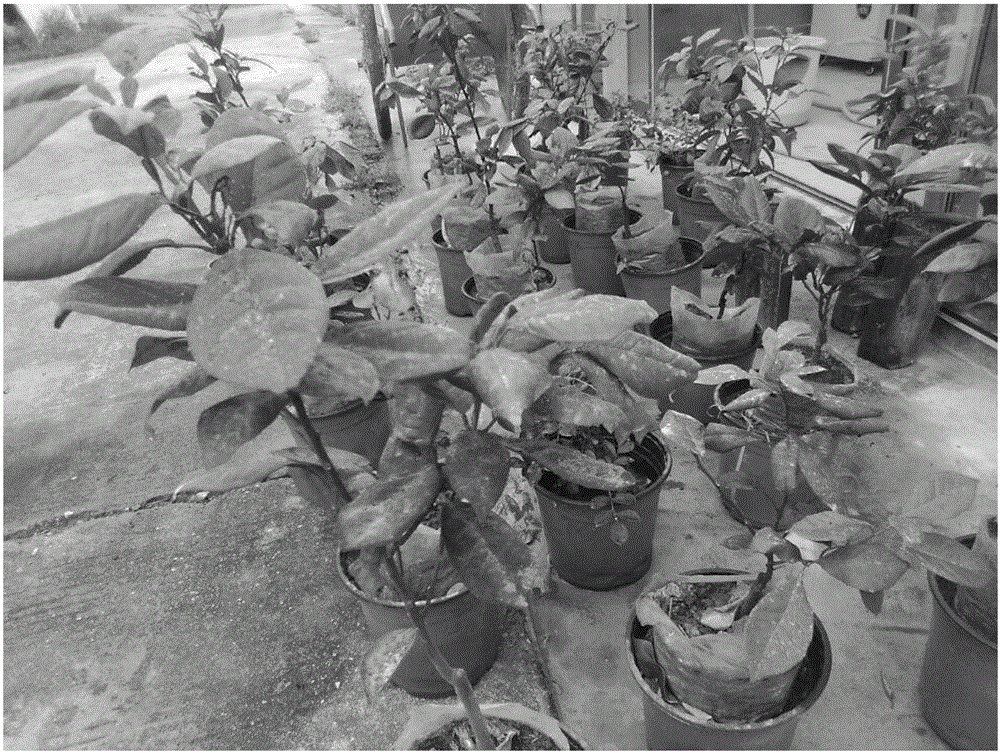Artificial feeding method for diaphorina citri
A technology of citrus psyllids and psyllids, which is applied in animal husbandry and other fields, and can solve problems such as not found, deformed, and young shoots shrinking
- Summary
- Abstract
- Description
- Claims
- Application Information
AI Technical Summary
Problems solved by technology
Method used
Image
Examples
Embodiment 1
[0033] The invention provides a method for artificially raising citrus psyllids, comprising the following steps:
[0034] 1 Cultivation and management of feeding plants
[0035] 1.1 Murata cultivation and management
[0036] 1.1.1 Murata cultivation
[0037] Purchasing the seeds of Jiulixiang in the market, sow the seeds in 10cm deep moist coarse vermiculite, and put them in an incubator at 32-34°C, 14h light: 10h dark. After 2 weeks of cultivation, Jiulixiang will germinate. Start transplanting after reaching 5cm. According to the size of the transplanting pot, plant 1-3 Jiulixiang seedlings in each pot. The potting soil is evenly mixed with coarse vermiculite and irrigation soil at a ratio of 1:1. Within 2-3 months after transplanting Fertilization is not allowed, and organic flower fertilizers can be used in the later stage according to the needs, and fertilization is carried out according to the principle of a small amount and multiple times, with liquid fertilizer as th...
Embodiment 2
[0057] A method for artificially raising citrus psyllids, comprising the following steps:
[0058] Step 1. Cultivation and management of reared plants: the reared plants include mulberry and citrus;
[0059] Among them, the cultivation and management of Jiulixiang are as follows:
[0060] Step a. Gourilla cultivation: Buy Gourilla seeds from the market, sow the seeds in moist coarse vermiculite at a depth of 10cm, and place them in an incubator at 30-35°C, 14h light: 10h dark. Germinate, and start transplanting after the seedlings grow to 5cm. According to the size of the transplanting pot, plant 1-3 Murata seedlings in each pot. The potting soil is evenly mixed with coarse vermiculite and irrigation soil at 3:1, and transplanted Fertilization cannot be done within the next 2-3 months. In the later stage, organic flower fertilizers should be used according to the needs, and fertilization should be carried out according to the principle of a small amount and multiple times. Li...
Embodiment 3
[0075] A method for artificially raising citrus psyllids, comprising the following steps:
[0076] Step 1. Cultivation and management of reared plants: the reared plants include mulberry and citrus;
[0077] Among them, the cultivation and management of Jiulixiang are as follows:
[0078] Step a. Gourilla cultivation: Buy Gourilla seeds from the market, sow the seeds in moist coarse vermiculite at a depth of 10cm, and place them in an incubator at 30-35°C, 14h light: 10h dark. Germinate, and start transplanting after the seedlings grow to 5cm. According to the size of the transplanting pot, plant 1-3 seedlings of Jiulixiang in each pot. The potting soil is evenly mixed with coarse vermiculite and irrigation soil at a ratio of 1:3, and transplanted Fertilization cannot be done within the next 2-3 months. In the later stage, organic flower fertilizers should be used according to the needs, and fertilization should be carried out according to the principle of a small amount and ...
PUM
 Login to View More
Login to View More Abstract
Description
Claims
Application Information
 Login to View More
Login to View More - R&D
- Intellectual Property
- Life Sciences
- Materials
- Tech Scout
- Unparalleled Data Quality
- Higher Quality Content
- 60% Fewer Hallucinations
Browse by: Latest US Patents, China's latest patents, Technical Efficacy Thesaurus, Application Domain, Technology Topic, Popular Technical Reports.
© 2025 PatSnap. All rights reserved.Legal|Privacy policy|Modern Slavery Act Transparency Statement|Sitemap|About US| Contact US: help@patsnap.com


